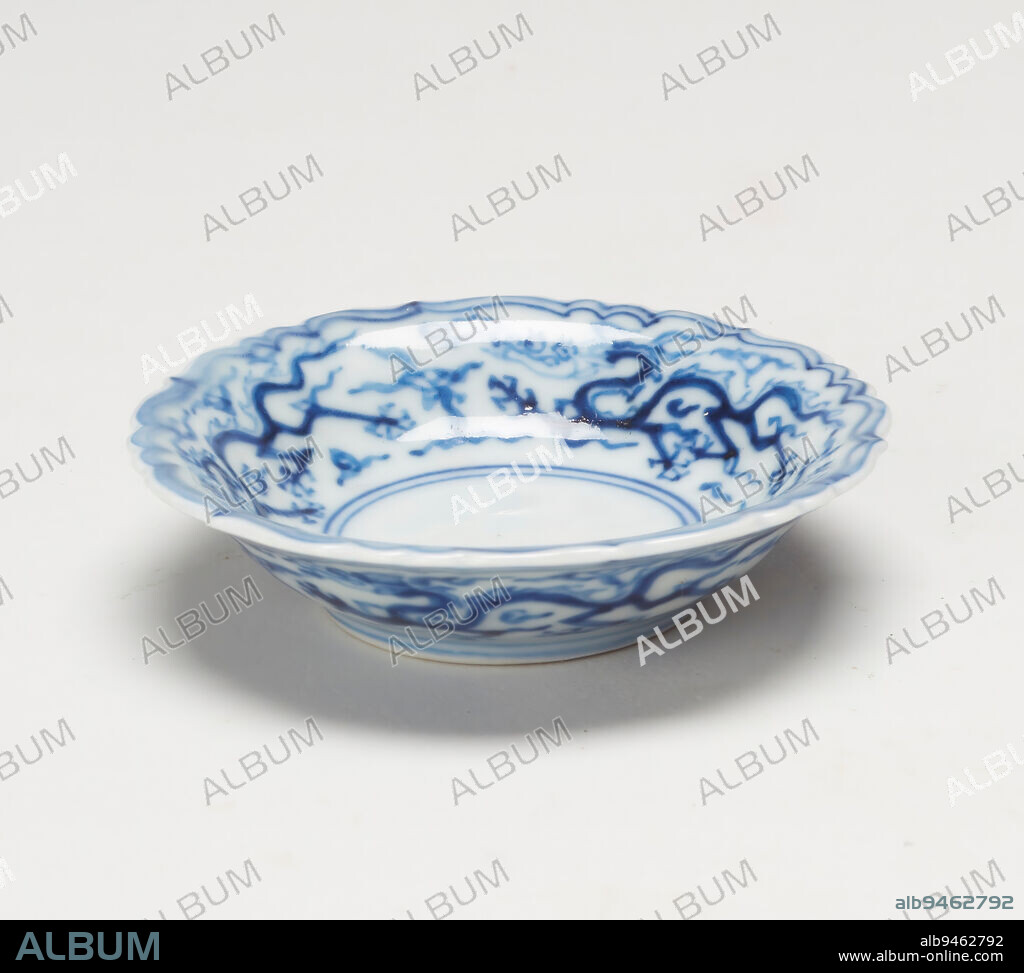alb9462792
Dish, 16th century, 9/16 x 2 7/8 x 2 7/8 in. (1.43 x 7.3 x 7.3 cm), Glazed porcelain, China, 16th century, Emperor Jiajing was a devout Daoist and Daoist symbolism became a common decorative element during his reign. In Daoist mythology, dragons were symbolic of yang, the male principle, spring, rain, and the East. This small dish shows dragons cavorting amid clouds. A unique feature for Jiajing period is the use of huiqing or Mohammedan blue, a form of imported cobalt which is purplish-blue in color tone. However, this form of cobalt tended to smudge during the firing process. By mixing imported cobalt with cobalt was mined locally, potters were able to produce the bright blue seen here, while still maintaining the crisp quality of their painted designs.

|
Añadir a otro lightbox |
|
Añadir a otro lightbox |



¿Ya tienes cuenta? Iniciar sesión
¿No tienes cuenta? Regístrate
Compra esta imagen.
Selecciona el uso:

Descripción:
Ver traducción automática
Dish, 16th century, 9/16 x 2 7/8 x 2 7/8 in. (1.43 x 7.3 x 7.3 cm), Glazed porcelain, China, 16th century, Emperor Jiajing was a devout Daoist and Daoist symbolism became a common decorative element during his reign. In Daoist mythology, dragons were symbolic of yang, the male principle, spring, rain, and the East. This small dish shows dragons cavorting amid clouds. A unique feature for Jiajing period is the use of huiqing or Mohammedan blue, a form of imported cobalt which is purplish-blue in color tone. However, this form of cobalt tended to smudge during the firing process. By mixing imported cobalt with cobalt was mined locally, potters were able to produce the bright blue seen here, while still maintaining the crisp quality of their painted designs.
Crédito:
Album / quintlox
Autorizaciones:
Modelo: No - Propiedad: No
¿Preguntas relacionadas con los derechos?
¿Preguntas relacionadas con los derechos?
Tamaño imagen:
4200 x 3772 px | 45.3 MB
Tamaño impresión:
35.6 x 31.9 cm | 14.0 x 12.6 in (300 dpi)
 Pinterest
Pinterest Twitter
Twitter Facebook
Facebook Copiar enlace
Copiar enlace Email
Email
